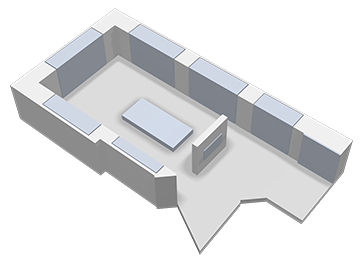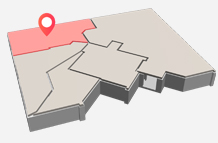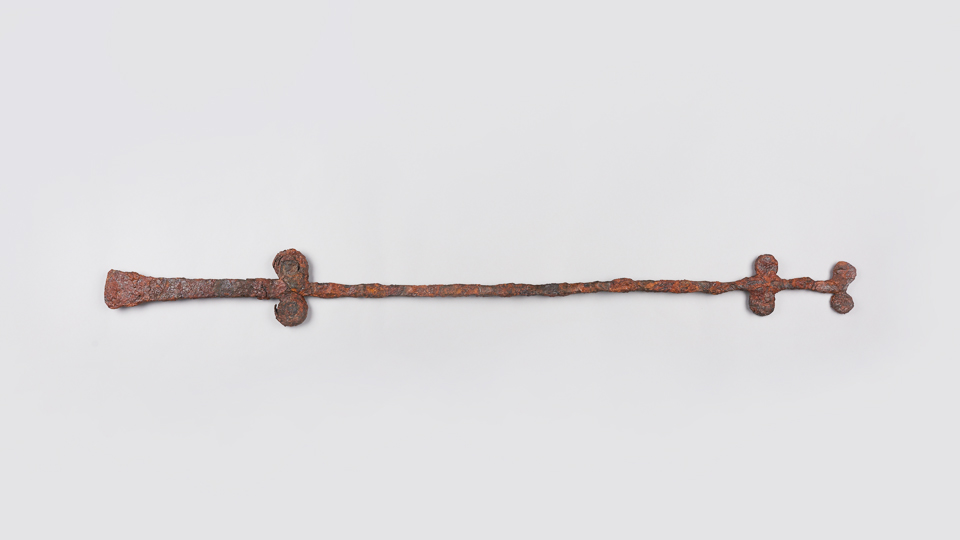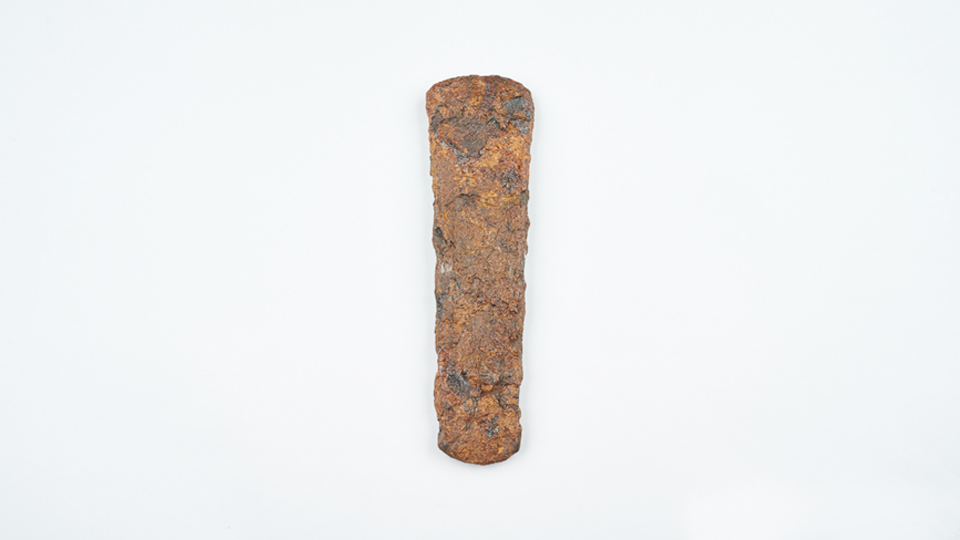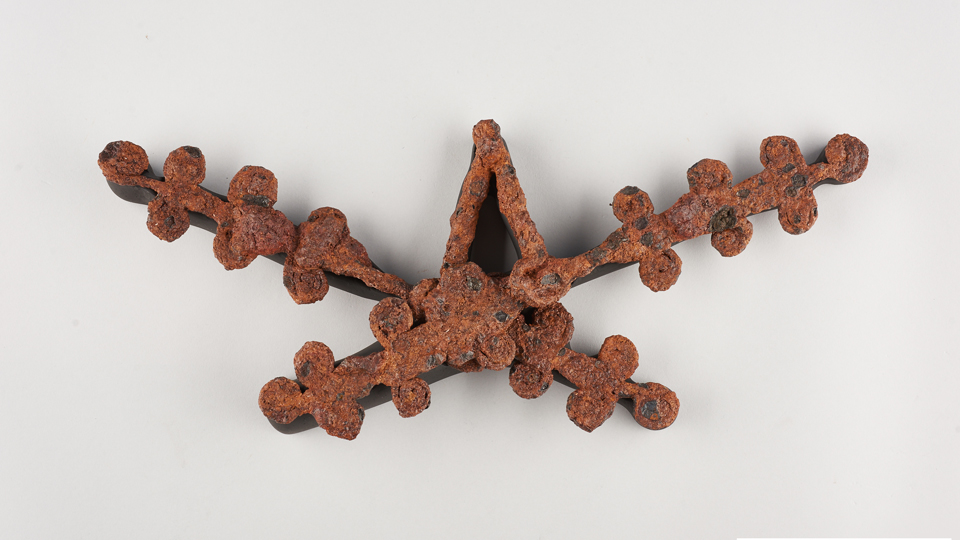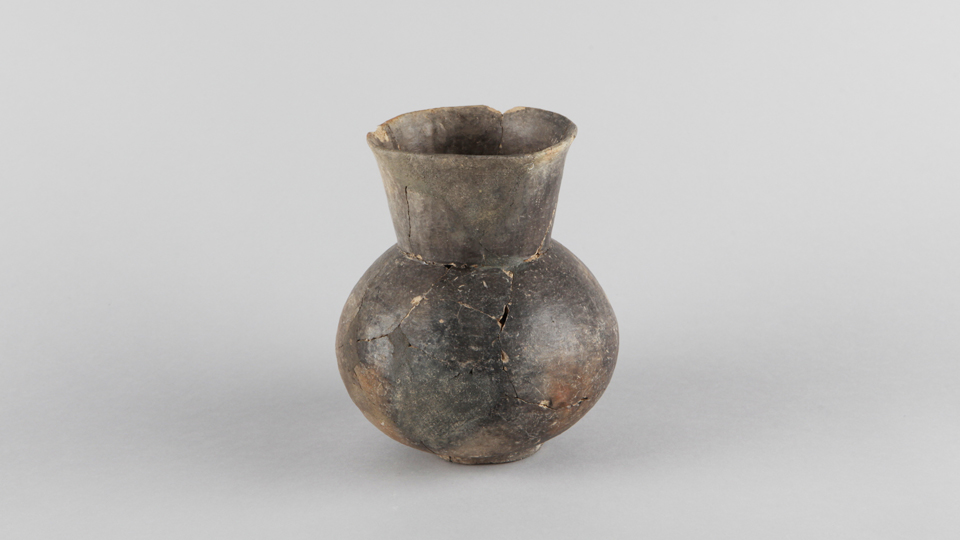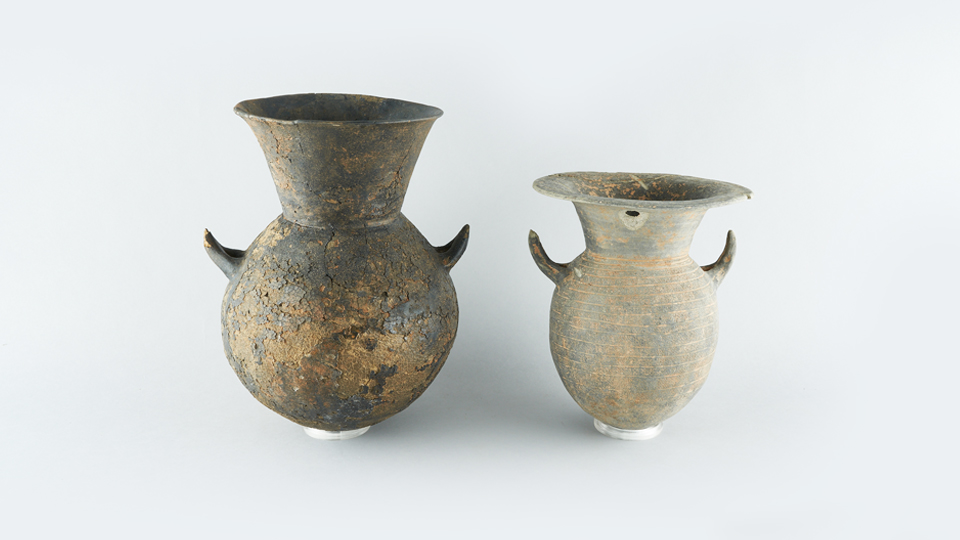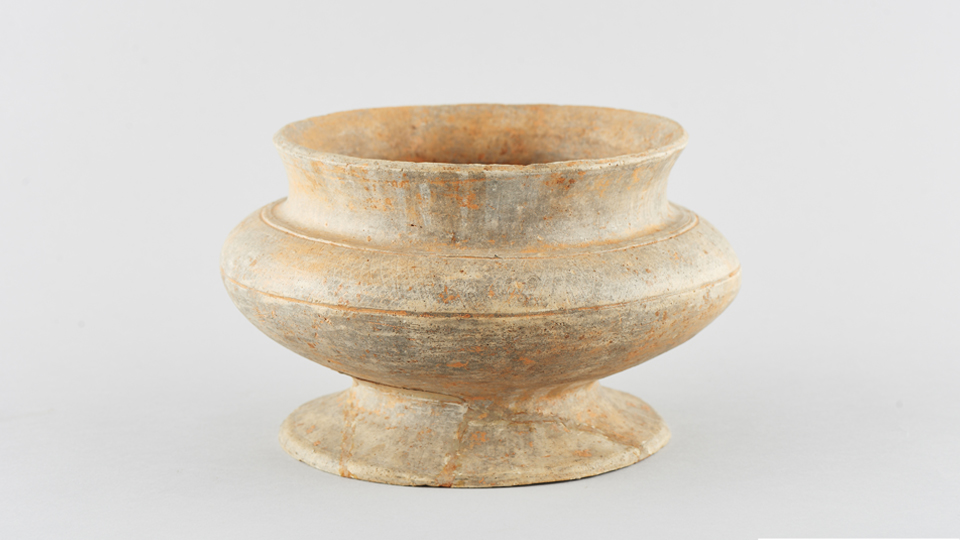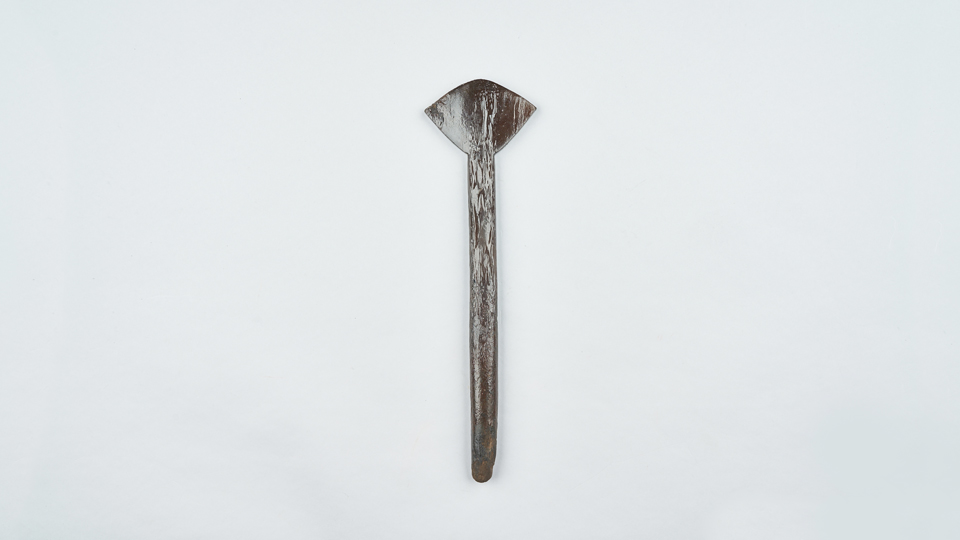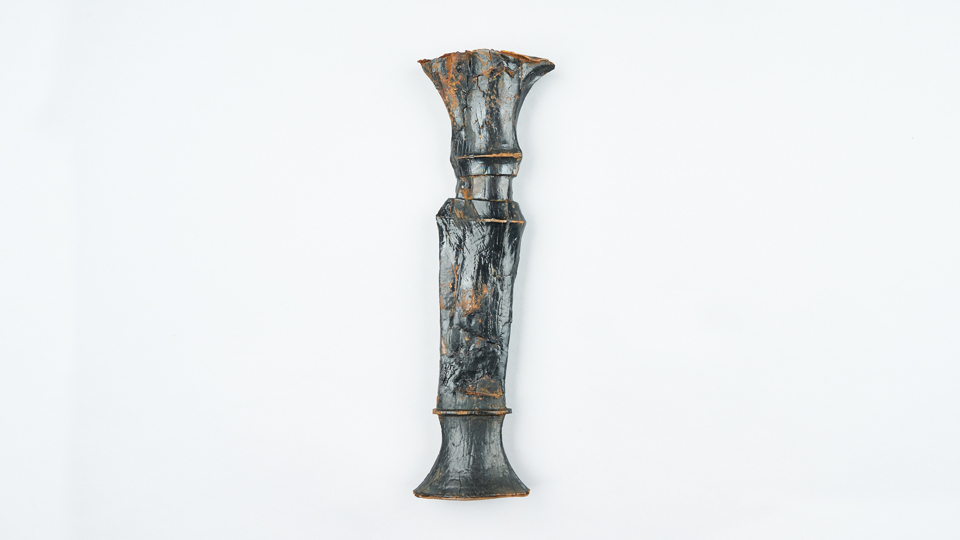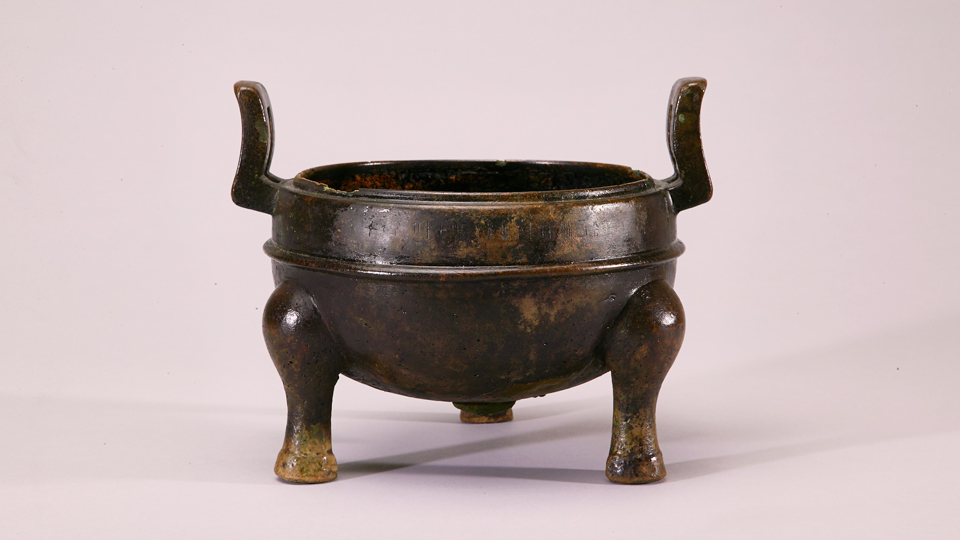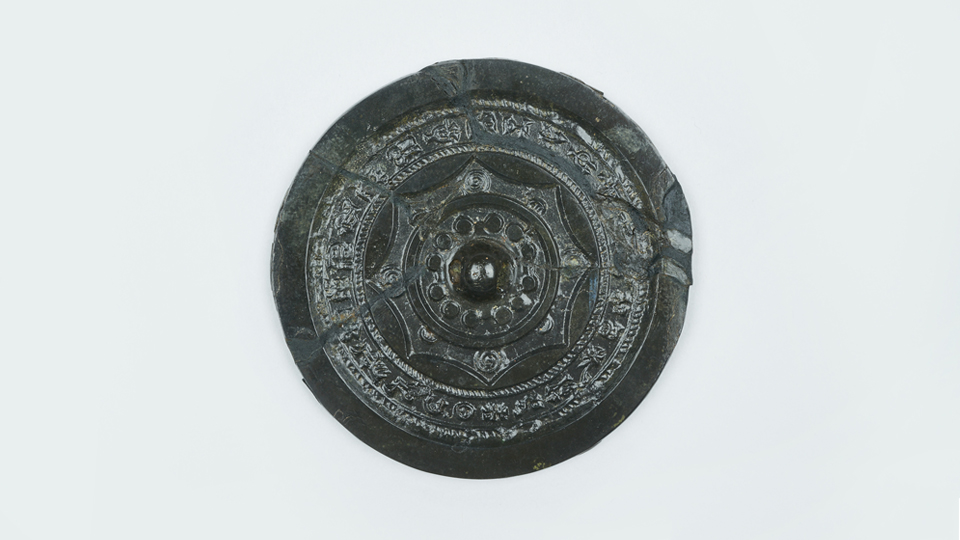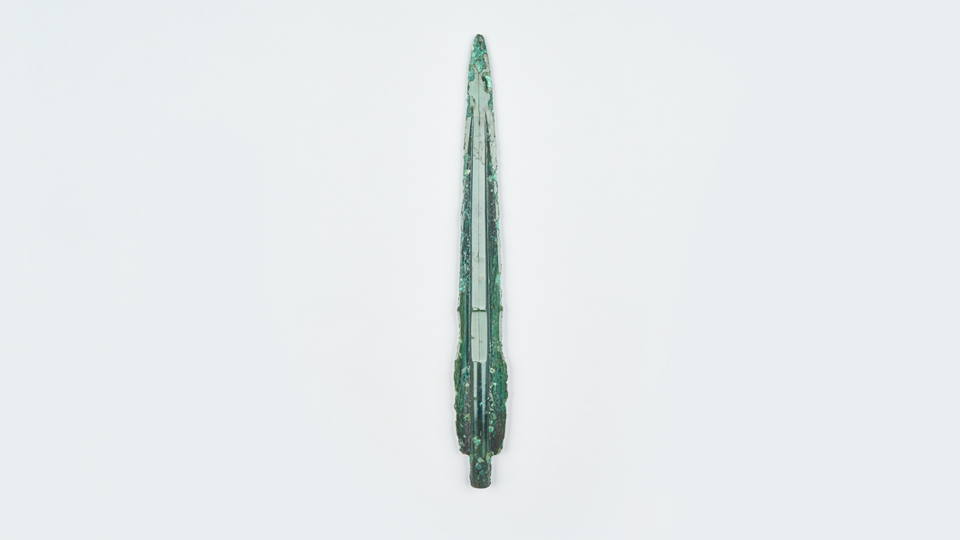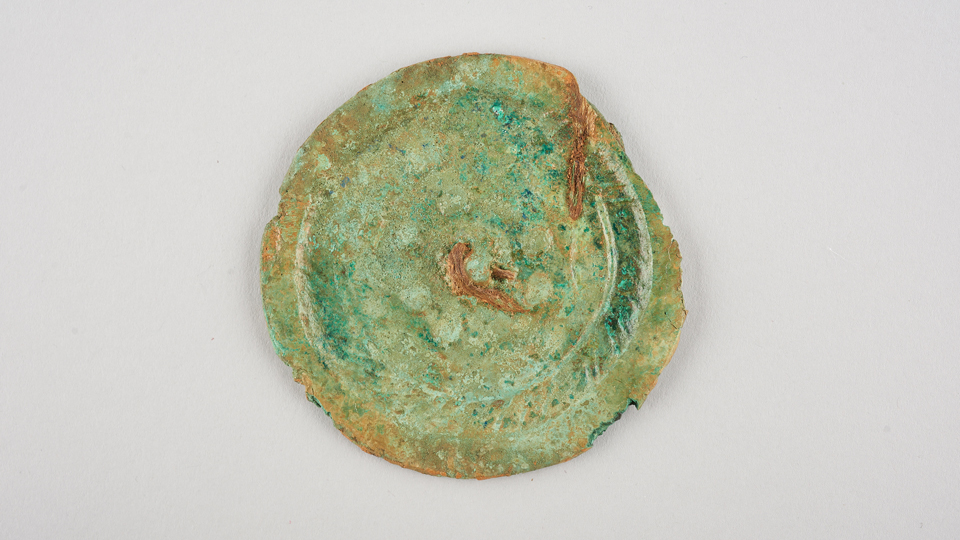Dawn of Gaya
Around the end of the Bronze Age, the establishment of the ‘Attached-rim Pottery Culture’ and the spread of a newly introduced ironware culture hastened social change in the lands that would later become Gaya territory. However, these new cultures did not completely replace the pre-existing local cultures, but coexisted with the indigenous cultures. The communities of the region began to use new types of material culture. Representative examples include iron implements and wajil pottery. The increase in the types and amount of grave goods placed in tombs represents another major change that was not observed in Bronze Age dolmens. Exchange with surrounding regions became more active, and the local communities competitively adopted new advanced cultures, laying down the foundations for the emergence of Gaya.
- Section 12Use of Iron
- Section 13Appearance of the Attached-rim Pottery Culture
- Section 14Wajil Pottery – Innovation in Production Technology
- Section 15Lacquerware – Wood with Color
- Section 16Maritime Exchange Network Hub
- Section 17Swords, Mirrors and Jade Beads
- Section 18Tomb of an Influential Figure – Dahori Wooden Coffin Tomb 1
Iron played an important role in the establishment and transformation of ancient societies. This was because the production of household tools and weapons from iron extracted from ore required advanced technologies. A more mature social and political system was needed to manage and maintain these advanced technologies. Ironware appeared in the lands of Gaya territory around the 2nd century BCE. The earliest iron implements were simple tools and farming tools.
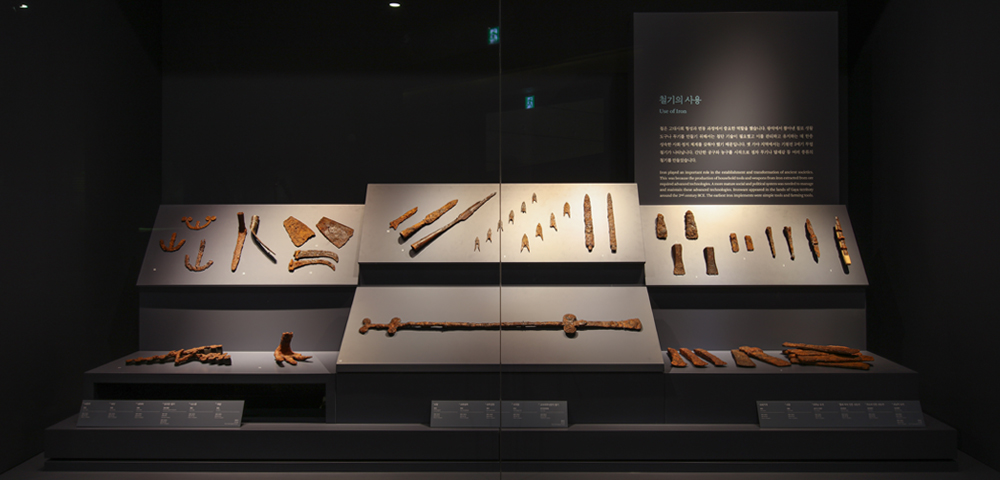
-
Iron Tool Yangdong-ri, Gimhae,
Length: 117.4cm -
Flat Iron Axe Daho-ri, Changwon,
Length: 28.5cm -
Iron Bit Daho-ri, Changwon,
Diameter: 42.3cm
Attached-rim pottery was made by attaching a single band of clay to the outer rim of a plain pottery vessel. At first, the clay bands were round in crosssection but they came to be replaced by triangular cross-section bands over time. Additionally, new objects such as black pottery, mounted vessels, and tools and weapons made of bronze (such as Korean-style bronze daggers) appeared. Dolmens were replaced by wooden coffin tombs that illustrated the power and prestige of the deceased. A new iron culture was introduced around the time that attached-rim pottery with triangular cross-section bands came to be used. Taken together, these changes form an archaeological phenomenon signifying the end of the prehistoric era.
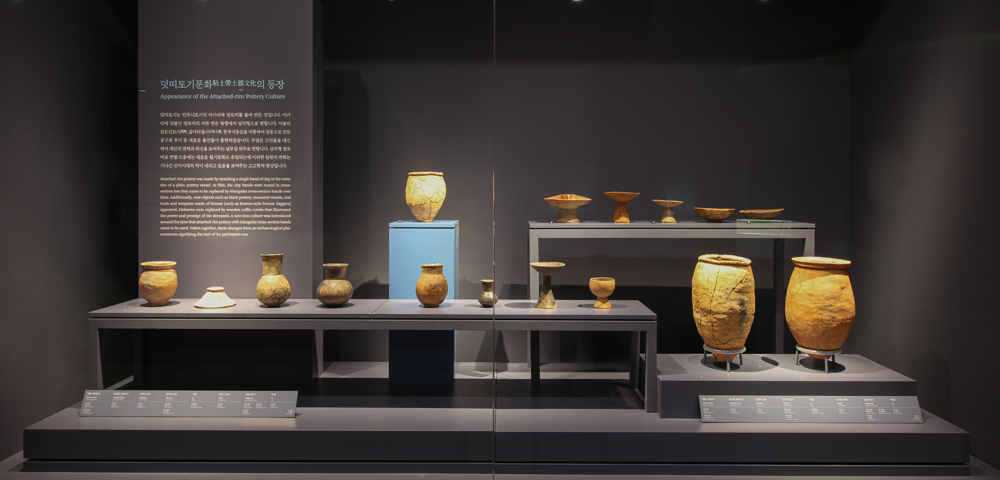
-
Attached-rim Pottery Daecheong, Gimhae,
Height: 23.4cm -
Mounted Dish Yeongchang-ri, Hapcheon,
Height: 12.7cm -
Black Burnished Pottery Neukdo, Sacheon,
Height: 18cm
Around the 1st century BCE, pottery featuring unique local characteristics began to be used in the central and southern regions of the Korean Peninsula. ‘Wajil pottery’, given this name due to its texture which is similar to that of roof tiles (瓦, pronounced as ‘wa’ in Korean), appeared in the Youngnam region. The types and shapes of wajil pottery became diversified over time, with notable additions being mounted vessels and braziershaped vessel stands.
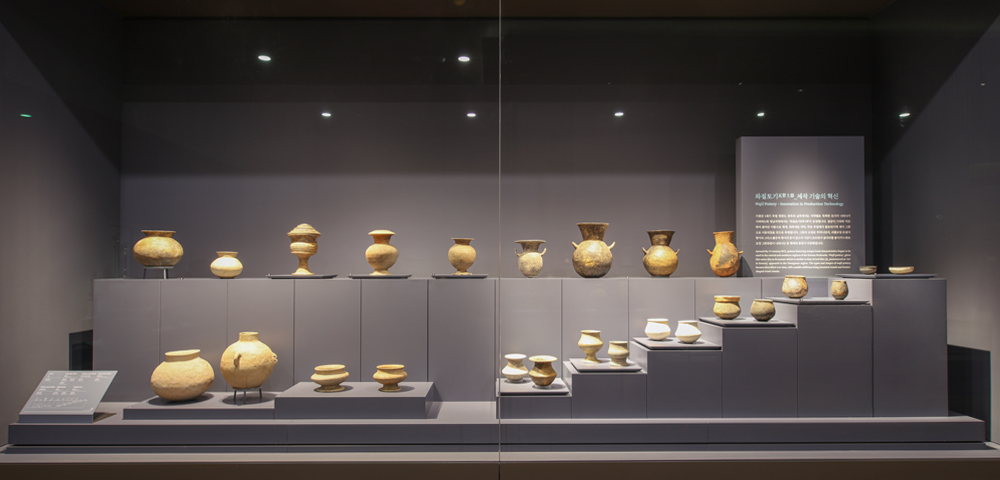
-
Jars with Horn-shaped Handle Daho-ri, Changwon,
Height: 31.8cm(left) -
Mounted Jar with Lid Jeonsapo-ri, Miryang,
Height: 24.4cm(right) -
Brazier-shaped Pottery Yangdong-ri,
Height: 13.4cm
Lacquering is a technique used to enhance the decorative quality and functionality of woodenware. The surface of lacquered wood is not only glossy and smooth, but is also resistant to moisture, heat, and rot. Lacquer was also applied to pottery, leather, and metal objects. The process of collecting and using the lacquer paint to cover surfaces was complex and expensive, making lacquerware very valuable at the time. The lacquerware items found in wooden coffin tombs are indicative of the social and economic status of the deceased.

-
Lacquered Fan Daho-ri, Changwon,
Length: 33.6cm -
Lacquered Scabbard Daho-ri, Changwon,
Length: 34.7cm -
Iron Axe with Lacquered Wooden Hilt Daho-ri, Changwon,
Length: 21.3cm
Many artifacts illustrating the nature of international exchange at the time have been discovered in the southeastern coastal region of the Korean Peninsula, centered around the Paleo-Gimhae Bay area. Bronze cauldrons, bronze mirrors, coins, etc. were obtained through exchange with the Chinese mainland, while Yayoi pottery, bronze spearheads, etc. are indicative of exchange with the Japanese Archipelago. Gaya’s most renowned exchange good was its iron, records of which appear in ancient Chinese historical texts. International exchange became more active with the advent of ironware, promoting social change and laying down the foundations for Gaya’s growth and development.
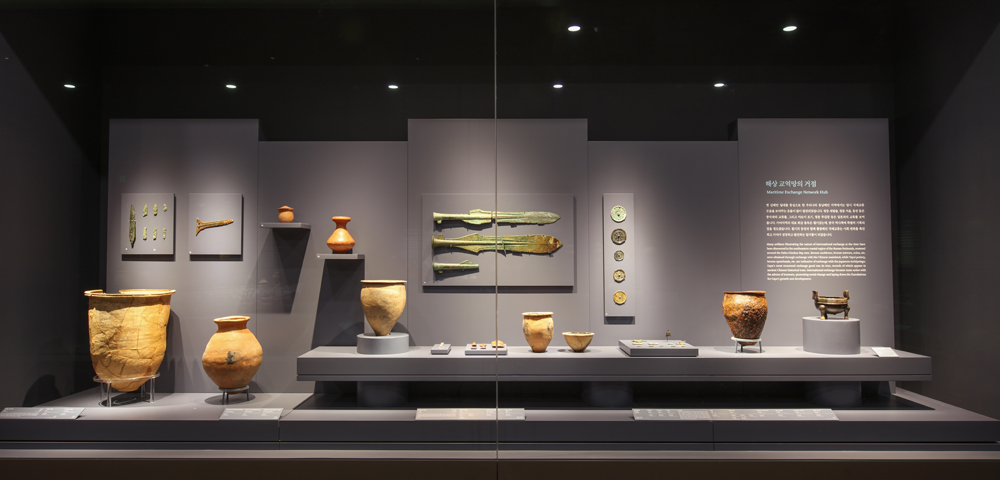
-
Bronze Tripod Cauldron Yangdong-ri, Gimhae,
Height: 17.5cm -
Chinese Mirror Gyo-dong, Miryang,
Diameter: 10cm -
Bronze Spearhead Yangdong-ri, Gimhae,
Length: 49.2cm
Swords, mirrors, and necklaces have been used to symbolize leaders or rulers since the Bronze Age. The use of wooden coffin tombs was accompanied by the appearance of iron swords, featuring scabbard and hilt decorations that became more elaborate over time. Mirrors modeled aer Chinese mirrors were also used. Necklaces, which had mainly been made of jade beads, became more extravagant with the addition of glass, agate, and crystal beads. The elite members of Byeonhan society visibly demonstrated their authority or power through the ownership of certain items.
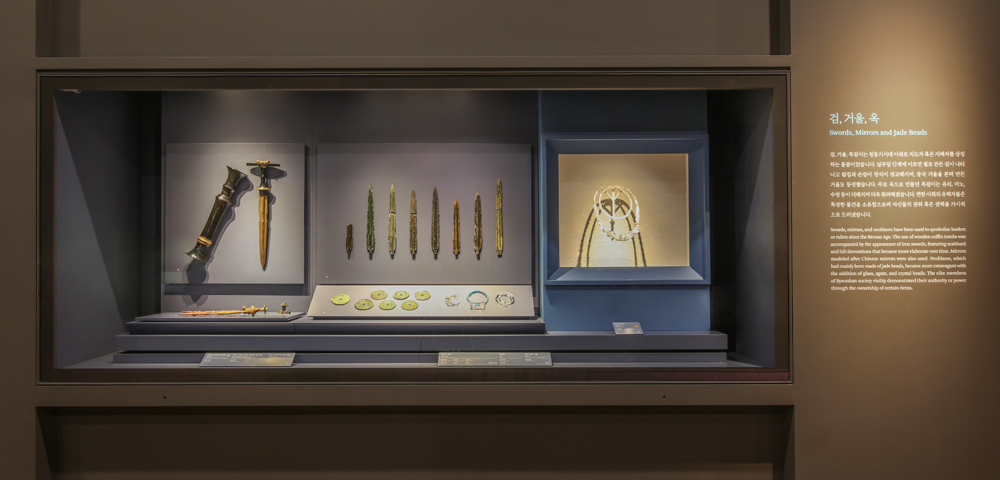
-
Crystal Necklace Yangdong-ri, Gimhae,
Length: 3.0㎝ (Curved Jade in the Middle) -
Korean-type Bronze Dagger Daho-ri, Changwon,
Length: 32.7cm -
Korean Copies of Chinese Bronze Mirror Yangdong-ri, Gimhae,
Diameter: 8.6cm
Villages that had grown since the adoption of farming as the main subsistence strategy in the Bronze Age experienced major changes around the end of the 1st century BCE. Large and small villages established closer relationships, and the influence of leading villages became more prominent. These villages are collectively known as eubnak (邑落). It is presumed that the various polities of Byeonhan would have consisted of several of these eubnak. The deceased individual buried in Tomb 1 at the site of Dahori is believed to have been an influential figure of the leading eubnak of the area, based on the superior nature of the quality and quantity of the grave goods.

